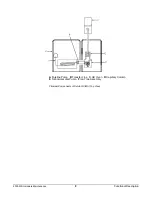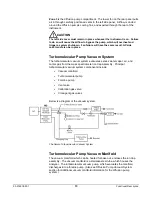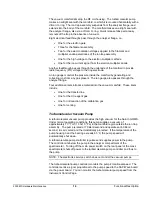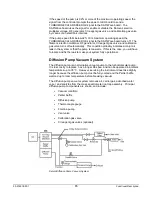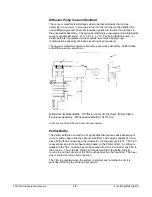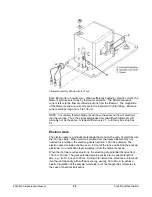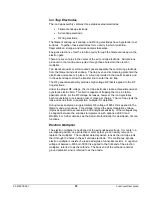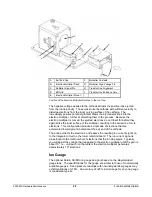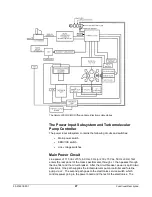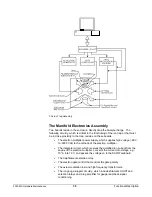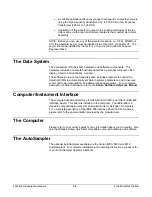
2000 MS Hardware Maintenance
22
Functional Description
Filament Assembly Shown with Ion Trap
Each filament is a rhenium wire. When sufficiently heated by electric current, the
filament produces electrons by thermionic emission. The filament emission
current refers to the flow of emitted electrons from the filament. The magnitude
of the filament emission current is set in the Instrument Control Page. Emission
current settings range from 5 to 100
µ
A.
NOTE: It is unlikely that two filaments will have the same net flow of electrons
into the ion trap. Thus, the signal amplitudes from two different filaments will
probably not be the same. A typical difference is 2:1, but it may be as high as
5:1.
Electron Gate
The electron gate is a cylindrical electrode that controls the entry of electrons into
the ion trap cavity. When electrons emitted from the heated filament are not
needed for ionization, the electron gate is held at a -150 Vdc potential. The
electron gate sits inside the trap oven, in front of the lens and behind the endcap
electrode. An anodization layer insulates it from the filament endcap.
When the ion trap requires electrons, the electron gate potential changes from -
150 to +150 Vdc. The gate potential remains positive for a variable length of
time, e.g., from 10
µ
sec to 65 ms. During this interval, the electrons are focused
into the ion trap cavity with sufficient energy, usually, 50 to 80 eV, to achieve
electron ionization of the sample molecules (or of the reagent gas molecules in
the case of chemical ionization).

